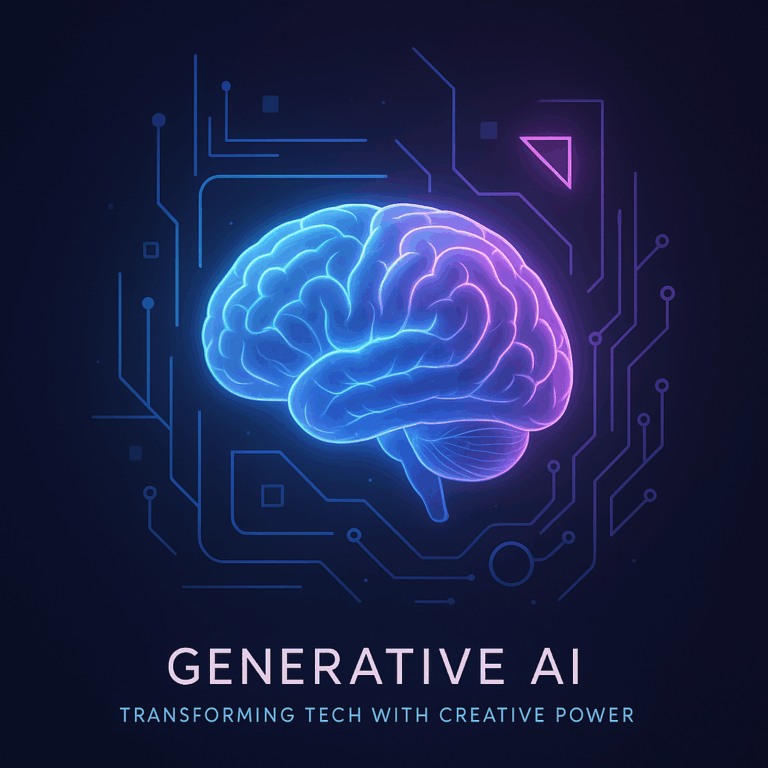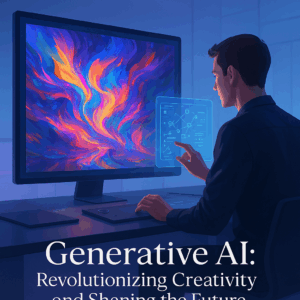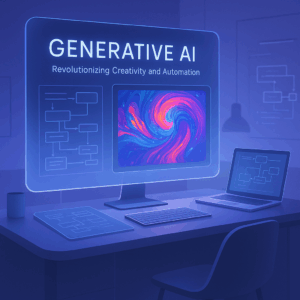Revolutionizing Reality: The Surge of Generative AI in Tech
The surge of generative artificial intelligence (AI) stands as one of the most transformative forces shaping today’s tech landscape. Far beyond simple automation or data processing, generative AI embodies a leap into machines that do not just analyze but create—crafting text, images, music, and even code with an almost human finesse. This revolutionary trend carries profound implications for industries, society, and the ethical frameworks around technology.
At its core, generative AI leverages deep learning models, especially transformer-based neural networks like OpenAI’s GPT series and Google’s Bard, to produce novel content from vast datasets. These models are not mere regurgitators of existing information; they innovate within constraints, synthesizing disparate knowledge into creative outputs. The ability to generate original text, design synthetic media, and simulate complex environments elevates generative AI from a tool of convenience to an engine of innovation.
Real-World Applications Transforming Industries
In creative industries, generative AI is redefining artistic expression and content creation. Filmmakers use AI-driven algorithms to storyboard ideas or generate realistic visual effects cost-effectively. Musicians harness generative models to compose music across genres, blending styles and emotions in ways that push musical boundaries. The publishing world benefits too, with AI-powered writing assistants accelerating the production of scripts, articles, and even novels, democratizing access to creative collaboration and ideation.

Healthcare has emerged as a vital frontier. AI models are generating synthetic medical data to train diagnostic systems without compromising patient privacy. They assist in drug discovery by proposing novel molecular structures and simulating their interactions, significantly reducing the timeline and expenses traditionally required. Robotics interfaces utilize generative AI to enhance adaptability and decision-making, allowing machines to develop new strategies in unpredictable environments, from surgical robots performing complex procedures to autonomous drones navigating disaster zones.
In corporate sectors, generative AI streamlines operations through smart automation. Customer service bots now generate empathetic and personalized responses, humanizing interactions without human intervention. Marketing teams deploy dynamic AI to tailor campaigns with precision-targeted content, improving engagement and conversion metrics. Even software development experiences transformation; AI-powered code generators expedite prototyping, bug fixing, and feature development, reshaping the role of programmers.
Industrial and Societal Impact: Transforming Labor and Creativity
The industrial disruption introduced by generative AI provokes both excitement and concern. Automated content creation challenges traditional job roles in creative fields, sparking debates on the future of employment and the definition of creativity itself. Yet, this technology also augments human capability, freeing creators from mundane tasks and enabling focus on higher-level innovation.
Societally, the propagation of AI-generated media presents a double-edged sword. On one side, it enhances accessibility and empowers underrepresented voices to produce professional-grade content. On the opposing front, synthetic media fuels misinformation, deepfakes, and manipulative narratives, eroding trust in digital information. The challenge lies in balancing technological progress with safeguarding truth and integrity.
Governments and corporations grapple with regulatory frameworks to address these dilemmas. Transparency mandates and AI ethics guidelines aim to prevent misuse and bias propagation. The partnership between technologists and ethicists becomes vital in establishing boundaries that preserve human dignity and democratic values while embracing the immense potential of generative AI.
Ethical Considerations in the Age of Synthetic Creativity
Generative AI’s ability to create believable, original content introduces complex ethical questions. Intellectual property rights face upheaval when AI synthesizes works inspired by countless copyrighted sources. Determining authorship and ownership becomes entangled, demanding legal and philosophical reassessments.
Bias embedded in training data perpetuates and sometimes amplifies discriminatory patterns, affecting fairness and representation in generated outputs. Companies such as OpenAI and Anthropic emphasize developing “alignments” to constrain AI behavior within ethical norms, applying extensive datasets that reflect diverse perspectives and employing human-in-the-loop systems for oversight.
Moreover, the transparency of AI decision-making—known as explainability—remains critical for user trust. Without clarity on how AI models generate results, misuse or unintended consequences can be difficult to detect and mitigate, complicating accountability especially when AI-generated content influences critical decisions.
Driving Innovation: Key Players and Future Trajectories
Powerhouses like OpenAI, Google DeepMind, and Anthropic continue to push generative AI’s boundaries, blending breakthroughs in natural language processing, computer vision, and reinforcement learning. OpenAI’s GPT-4 and Google’s LaMDA represent leaps in contextual understanding and generation quality, setting new standards for human-AI interaction.
Startups operating at the intersection of generative AI and domain-specific applications—such as Runway for AI video editing or Jasper.ai for marketing content—demonstrate how this technology’s utility expands beyond research labs into everyday workflows.
Looking ahead, generative AI will increasingly fuse with augmented and virtual reality, enabling fully immersive worlds populated by dynamically generated narratives, characters, and environments. This hybridization promises radical shifts in entertainment, education, and remote collaboration, blurring lines between creator and audience, physical and virtual.
On the horizon, concepts such as “foundation models” capable of learning from fewer data points and adapting to multiple tasks will enhance flexibility and reduce computational costs, broadening access to generative AI’s capabilities. Additionally, advances in multimodal models—integrating text, images, audio, and sensor inputs—will generate experiences that feel more intuitive and context-aware.
Expert Insights: Reimagining the Fabric of Tech
Sam Altman, CEO of OpenAI, encapsulated the transformative potential by stating, “Generative AI will be as foundational as the internet itself; it’s not just a tool—it’s a new way to augment human creativity and intelligence.” This vision echoes throughout industry leaders who anticipate a symbiotic relationship where AI enhances, rather than replaces, human ingenuity.
As generative AI matures, embedding responsible innovation at its core becomes imperative. This journey involves continuous dialogue across disciplines, transparent development, and robust policies. Through such measures, the technology promises to unlock unprecedented possibilities—reshaping tech, society, and the human experience in profound ways.


